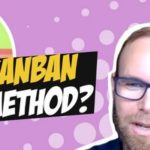Podcast: Download (Duration: 20:50 — 19.8MB)
Get Notified Of Future Episodes Apple Podcasts | Spotify | Amazon Music | Android | Blubrry | Gaana | TuneIn | Deezer | Anghami | RSS | More
You can build up a lot of content over years of running a website, which is the case for James. And unless you’re Wikipedia, that may not be a good thing.
In this podcast episode, he’s invited SEOLeverage’s Gert Mellak to talk about the impact of excess content on SEO, and how content pruning can be helpful.
James and Gert will look at the aim of a website content audit.
They’ll discuss how to improve SEO results by culling and organizing information.
And they’ll talk about the importance of interlinking and context to SEO.
Table of contents:
1. Can you have too much content?
2. The evolution of SEO strategies
3. Content relevance and authority
4. The stuff that goes and the stuff that stays
5. Content pruning and redirection
6. Aligning content with business intent
7. The process of cleaning and organizing
8. Internal linking and context are important
Can you have too much content?
When Gert told James he had too much website content, that was unexpected. Years ago, the prevailing mindset online was to become another Wikipedia, building authority by accumulating extensive content.
Excess content, it turns out, leads to issues with Google’s crawling and resource utilization. To address this, James, with Gert’s help, is looking at content pruning as a strategic solution.
Any content relevant to James’s role as a trusted authority or to his or his partners’ sales activities can stay. Anything that doesn’t meet these criteria, particularly if it lacks significant traffic or backlinks, can be pruned. This approach aims to streamline the website by focusing on high-impact content while eliminating material that doesn’t contribute to the site’s primary goals.
The evolution of SEO strategies
Gert discusses the evolution of SEO strategies, stressing the challenges posed by increased competition and content saturation in the digital space.
Previously, it was easier to gain traffic due to content’s novelty. Now, nearly every topic is extensively covered, making it harder to stand out.
Gert points out, too, that many businesses drift from their core message over time, leading to a proliferation of unrelated content. This shift confuses Google’s understanding of the site’s focus. Even if older content remains relevant, it may require updating or reworking to align with current business objectives and meet Google’s evolving standards for ranking.
Content relevance and authority
James and Gert look at how the relevance and authority of content have become crucial in today’s SEO landscape. They recognize that businesses evolve over time, leading to changes in the type of content they produce. James notes that while his business focus has shifted, his website still hosts a wide array of past content, some of which may no longer be relevant.
Gert suggests that content should not only remain relevant but also be periodically revisited and updated to maintain its alignment with the business’s core services and the expectations of modern users.
The stuff that goes and the stuff that stays
Gert explains the delicate process of deciding which content to keep and which to discard. He advises that content still generating interest or downloads, even if not directly related to the business’s current focus, can be kept but made non-indexable to Google.
Alternatively, content that has become irrelevant but has backlinks can be redirected to similar, more relevant topics. This approach helps consolidate valuable content, ensuring it remains aligned with the business’s evolving direction while maintaining SEO benefits.
Content pruning and redirection
Content pruning begins with a thorough website audit to assess how well the content aligns with the brand’s current focus.
Gert describes a situation where a client had a significant amount of traffic coming from content unrelated to their business, calling for extensive pruning.
He likens the process to a game of connecting the dots, where removing irrelevant ‘dots’ simplifies the overall picture, making it clearer for Google and users to understand the site’s primary focus.
Aligning content with business intent
To align content with a business’s intent, strategies include consolidating similar topics into comprehensive articles as well as completely removing outdated or irrelevant content.
This approach ensures that the content not only serves the business’s current goals but also resonates with the audience’s expectations and Google’s ranking criteria.
The process of cleaning and organizing
Managing a large volume of content can be overwhelming. Gert assists clients step-by-step through this process. This involves prioritizing content that needs to be refreshed and determining which pieces to remove. He stresses again the importance of regularly updating content to maintain its relevance and effectiveness.
The process is methodical, often broken down into manageable segments, ensuring each part of the website is aligned with the business’s objectives.
Internal linking and context are important
Finally, Gert discusses the critical role of internal linking and providing context in content management. He points out that content lacking proper context or internal links can attract irrelevant traffic, which is harmful to SEO.
By structuring the website’s content and linking strategy effectively, businesses can provide clear signals to Google about the relevance and purpose of each piece, enhancing the site’s overall SEO performance and user experience.
James is off to prune his website. And if you’re interested in a potential KonMari for your own business, you’ll find Gert at SEOLeverage.com.
Liked the show? Enjoy all the episodes when you subscribe on iTunes












Leave a Reply